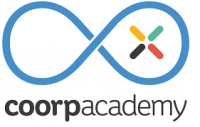
Learning Management Systems (LMS) have been the central and most talked-about technology in the e-learning and corporate Learning & Development (L&D) space for the last 20 years. The problem: they are really there for course bookers, not the road warriors who actually need the training. A gap that has led to the rise of a new, more learner-centric, class of e-learning software, the ‘LXP’.
Influential L&D sector analyst Josh Bersin coined the term a few years ago. However, the idea was really properly sanctioned when Gartner gave it the seal of approval earlier this year. Janet Clarey at Bersin by Deloitte offers the following useful definition of what they offer a buyer:
“LXPs are single-point-of-access, consumer-grade systems composed of integrated technologies enabling learning. They can do many tasks, such as curating and aggregating content, creating learning and career pathways, enabling networking, enhancing skill development, and tracking learning activities delivered via multiple channels and content partners. By delivering on a central platform, LXPs enable businesses to provide an engaging and learning-rich experience and may lessen their reliance on an LMS or talent suite as the learning hub.”
Integrated technologies for enabling learning
Why do firms need them in their organisations? Because the elearning community has neglected content. Companies that only use an LMS typically have an administrative team managing the software and deciding what courses and training modules will be made available, with content choices made by Learning & Development managers and executives. The vast majority of employees cannot directly influence their learning experiences or content offerings.
Instead, learning needs to be embedded into the learner’s daily activities or the applications on which learners spend the most time, and we need new content creation models. Most likely in the form of e-learning that is smart, consumer-like and properly integrated into the flow of everyday activity.
An LXP, then, should reflect how we all behave in our day-to-day lives – how we look for content on our smartphones and address any knowledge shortfall as soon as it is identified. Likewise, today’s training has to be mobile, always available, delivered in engaging, bite-sized bursts that fills in gaps in your knowledge where they exist – and where appropriate, involves fun and proven engagement techniques like gamification and online competitions between learners.
These new training tools promise to end the isolated elearning experience that has led to the biggest problem in corporate learning – user indifference leading to notably poor completion rates.
The problem with traditional elearning is a critical lack of user engagement. As a result, the current average completion rate for MOOCs (massive open online courses), the alleged Silver Bullet for e-learning, averages at a very low 15%. Meanwhile some studies put the drop-out rates for online at about 70% compared with an average of 15% for classroom training.
Such indifference and poor acceptance turns your training budget into an expensive resource-wasting, tick-box exercise. It also makes any attempt to convince your staff you are serious about helping them up-skill and re-skill somewhat unconvincing.
Instead of privileging the administrator, however, LXPs are designed to cater to the learner’s immediate and future needs and be adjustable to their level, employing a range of tools to do so. Asking them questions before any teaching takes place (the flipped pedagogy model) is a great way to pinpoint learning levels. It means users only get offered the lessons they need.
This is the foundation of a move towards adaptive learning, in which content and teaching frameworks are customised to the individual. Such learner-centric platforms work and can secure high user engagement levels. Take the example of one of our users, Schneider Electric, which places user centricity at the heart of its training: “Individuals are able to self-pace their learning, and we are experimenting with mobile learning as the next frontier in this journey. Digital learning is now a way of life here.”
Equip your staff for tomorrow’s complex workplace
So do we need to jettison the LMS? To start being useful again, elearning needs to complement its existing LMS with the best of a customised LXP approach. The bottom line is that the LMS is a hugely useful L&D tool, but needs to be supplemented by this new emerging category of e-learning excellence.
The author is CEO of Coorpacademy, a leading learning experience and upskilling platform.
Coorpacademy disrupts Corporate Digital Learning with a Learning Experience Platform (LEP) used by global brands including Adidas, Capgemini Consulting, Engie, Faurecia, Schneider Electric, Société Générale and Tag Heuer.
Its cutting-edge SaaS-based solutions include the latest innovations in instructional design, including gamification, micro-learning, adaptive and social learning, so as to convert any content into an engaging learning experience, fully adapted to learner needs. With a content library of more than 700 courses, produced with top industry experts like IBM and Wolters Kluwer, the Coorpacademy LEP develops employee digital and soft skills, as well as boosting engagement and employability.
The platform supports 19 different languages and supports a community of 700,000 corporate learners worldwide.
Founded in 2013, the company is based at the EPFL (Swiss Federal Institute of Technology)’s Lausanne campus, with offices in Paris and London. Learn more at www.coorpacademy.com


























